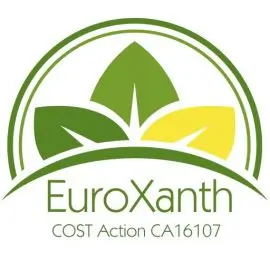
In 2010, the olive groves of southern Italy started to suffer from a mysterious wasting condition. Since then, over 20 million olive trees have been lost to this plant plague with a devastating impact on the area. The cause was a bacterium of the family Xanthomonadaceae: destructive plant pathogens that are a significant challenge to food security globally. They are able to infect all kinds of crop plants from cereals and vegetables to fruits and even lawn grasses.
The appearance of this particular pathogen, Xylella fastidiosa, in Italy was a first for Europe and immediate action was required to study the species, understand the life cycle, and develop strategies to sustainably protect plants and reduce the damage caused. The COST Action Integrating science on Xanthomonadaceae for integrated plant disease management in Europe (EuroXanth) was part of that response that brought together an interdisciplinary network to counter this significant threat to European flora and agriculture.

Imported pathogens
Dr Ralf Koebnik from the Institute of Research for Development in Montpellier was the Chair of the Action. “This pathogen had not been observed previously in Europe but has had significant impacts on, for example, citrus production in South America and grape vines in California”, he explains. “But they can attack almost everything. The bacteria probably arrived in Europe via an imported coffee plant and then jumped into olive trees in Italy.”
The origins of EuroXanth

The genesis of the Action was during a PhD defence in Louvain-La-Neuve, Belgium, where Ralf discussed the emerging threat with a number of colleagues, and it was decided that a network at European level was needed.
“We needed to better understand the genetic diversity of the pathogen family,” explains Ralf. “How it can cause disease, the mechanisms it uses to harm the plant and how the plant can defend itself and become more resistant. Finally, we needed to consider disease management: what are the best agronomic practices that will help minimise transmission of the bacteria and how can the infection be controlled and eradicated in as sustainable a manner as possible.”
EuroXanth gathered experts from a wide range of disciplines in Europe and also reached out to international experts. “Exchanges with colleagues in the US were important as they had the experience of dealing with these pathogens already and we were able to bring their techniques to Europe,” adds Ralf.
New diagnostics tools
EuroXanth developed and tested its own tools to detect and identify bacteria isolated from infected plants. “This helped us to describe the taxonomy of the various pathogen species,” comments Ralf.
The Action ran three Training Schools on the use and interpretation of the new techniques for young researchers. “For me, this was a very strong aspect of the Action,” comments Ralf. “We were able to bring together researchers from western and eastern Europe to get valuable experience and learn about the new tools.”

Although EuroXanth finished in September 2021, the network is still active with papers being published and a lot of bilateral collaborations emerging thanks to the links forged under COST.
And the Action itself has been immortalised. One of the new pathogen species identified was one that affects walnut trees and it has been given a familiar name.
“France, Portugal and Spain grow a lot of walnuts and the new species was named Xanthomonas euroxanthea – so our COST Action will now live forever.”
Dr Ralf Koebnik, Chair of EuroXanth
